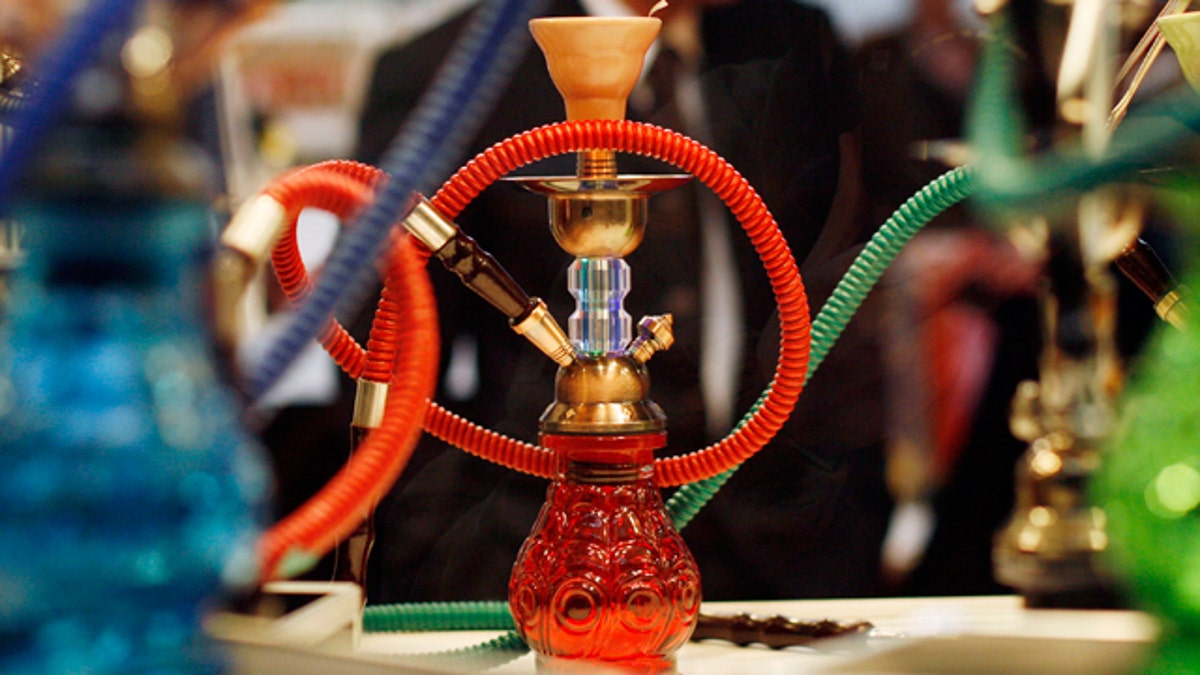
California public health officials warned on Thursday of a sharp rise in tobacco smoking from hookahs, and a proliferation of cafes and lounges offering the Middle Eastern-style water pipes, which experts say can be at least as harmful as cigarettes.
Hookah smoking among Californians jumped more than 40 percent between 2005 and 2008, said Dr. Ron Chapman, the state director of public health, citing a 2011 state tobacco survey published in the American Journal of Public Health.
He said the trend was particularly pronounced among college-age adults, with nearly a quarter of men 18 to 24 years old reporting they had used a hookah at least once, according to the same study.
Experts say the growing popularity of hookahs has been fueled in part by a perception that the water pipes are more socially acceptable than cigarettes and the erroneous belief that inhaling tobacco smoke drawn through the water filters out some of its toxins.
But smoke from hookah tobacco -- which comes in such flavors as apple, strawberry, honey and mint -- retains all the carcinogens of cigarette smoke while adding more carbon monoxide and extra carcinogens from the use of burning coals that are used to keep the nicotine flowing, health officials say.
During a typical hour-long session, a hookah user inhales 100 to 200 times the volume of smoke inhaled from a single cigarette, according to the U.S. Centers for Disease Control and Prevention.
"There is a very, very concerning misperception about the use of hookahs among youth, thinking it's somehow safer. In fact, it puts you at the same risk," Chapman said.
The warning came as Chapman announced an anti-smoking advertising campaign aimed at those most likely to light up - low-income, minority youth, especially African-Americans.
While California has in many ways led the nation in discouraging smoking, "tobacco use is still the No. 1 cause of death and disease in California," he said.
Tobacco kills nearly 34,000 Californians a year and leads to annual healthcare costs of $6.5 billion, or $400 for each state taxpayer, he said.
Although pubs and restaurants in California have banned smoking since 1998, hookah bars and cafes are permitted under exemptions for owner-operated tobacco shops or other businesses where no food or beverages are sold without employees or staff, said Corey Egel, a state public health department spokesman.
The growing popularity of hookahs among young adults in California mirrors a broader trend nationwide. A study in May by the University of Pittsburgh School of Medicine of 152 universities nationwide found that over 30 percent of students had smoked tobacco from a hookah during the previous month.
Hookah smoking, which originated in Persia and India, has seen a resurgence in Middle Eastern countries and elsewhere, too, with water pipes referred to as narguila in Syria, Lebanon and Turkey and as sheesha in Egypt.
